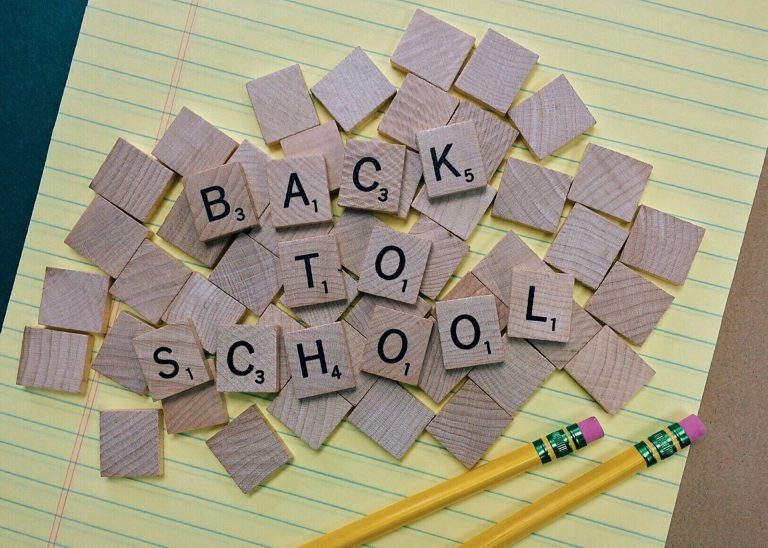A
1. Work hard towards achieving set goals
Children who tend to achieve well in academics, sports, or different competitions realize the value in setting goals. This starts with a dream-like mindset about what it is they want and then planning out the steps necessary to turn their dream into a reality.
It is important to start small when setting goals. A really big goal is great! However, breaking it down into smaller goals that are shorter term make it more manageable and attainable. This goes for test preparation, project completion, a concert performance, sporting event or anything that involves practice and preparation. The key thing is for children to attain success at some level. They will soon experience a feeling of success and see the value in setting goals. From that point, a child has a platform that he can build from and complete future goals on their own.
2. Do things without constant reminders
One of the biggest obstacles to success is prolonging getting started. That’s right…it’s the P word. You guessed it! Procrastination at its finest! I tell my students that the biggest challenge to completing their homework isn’t the level of complexity, but is literally getting it out of the backpack and putting it onto the table. I’ve learned that two things do not work with motivating children: reminding and rewarding.
Reminding and rewarding at times could be the more convenient approach to get a child to do something. However, this can get quite exhausting and expensive and does not put the onus of responsibility and decision-making on a child. Rather than constantly reminding children to get started on something, get them into a routine, which is really an expectation to complete something – starting at a certain time – with a general time frame in mind. Motivated students realize that if they get into a habit, a regular daily routine, of where and when they do homework or chores, it becomes that much easier to get started and stay motivated to complete tasks in a timely fashion.
3. Practice a “Go-Getter” attitude from an early age
Having a “go-getter” mentality is not something that happens overnight with children. At the core of motivation is a high level of self-esteem and self-confidence in one’s ability to tackle a particular task. When a child feels that he can handle the task or challenge that lies ahead, whether it be at home, school, socially, in sports, relationships with others, he is more willing to take risks and be willing to fall or fail to achieve that goal.
Early on in my work with children, I believed that motivating children comes from something outside of the child that was given to them. I would try to motivate them through not only my words and actions, but through stories, constant encouragement, making them laugh, giving them prizes, stickers, and telling them how much I believe in them. These things can certainly influence a child’s confidence and desires and have their time and place, but rather than being a source of motivation, I realized that by doing one key thing, sparked the greatest inspiration within them, which served to be my greatest tool.
It was the one thing that my mother taught me to do when I was a little boy that would help me truly understand and gain a competency, which ultimately led toward a greater self-confidence. That is listening. Just by paying attention to someone and what they have to say, without judgment, helps build their morale, shows that you are interested in hearing what they have to say and demonstrates how much their words have value. This is one of the best kept secrets for helping a child find their motivation and something I would recommend that you implement right away!
4. Voluntarily engage in creative activities
Before you decide to enroll your child in every enrichment activity out there, be aware of the quality of activities you expose your child to. You want your children to feel responsible for their success. Refrain from overexposure to technology as that counteracts the creativity process in many regards. Instead, provide your children with opportunities to problem-solve, handle tasks independently, as well as collaboratively. Give them a chance to become a leader and voice their opinion through community work, contribute to caring for a garden or a pet, or create something artistic to express their innermost feelings. These kinds of activities can give them the spark they need to feel excited and motivated to try new things and pursue different ventures throughout their life. And lastly, give your child a chance to choose what they would love to do. Allow them to explore different activities and find what moves them the most.
5. Enjoy the learning process
Kids learn through many modalities. When they are young, children need to be guided through the learning process. Much of learning at a young age comes through play, movement, and imagination. Therefore, allowing a child to be physically active and use their imagination can be a great stimulus toward engaging learning. As a child gets older, integrating their passions into what they are learning can spark motivation. Connecting what a child is learning to something in the real world that affects them in some way or another, shows the relevance and worth in what they are learning. This makes them more interested in wanting to learn about something that may otherwise be boring or irrelevant to their life.
In my best-selling book, The Ultimate Guide to Raising Teens and Tweens, I discuss a variety of strategies to help motivate your teen or tween in all aspects of their lives, without having to nag them.
If you are looking to regain motivation for life, take things to the next level in your business or personal life, or get a fresh start and try something new in life, check out my program “30 Days to Finding You.” I walk you through my 10-Step Personal Happiness Formula that you can apply to your life, starting today. Click here to learn more.
To More Motivation and Less Procrastination!













